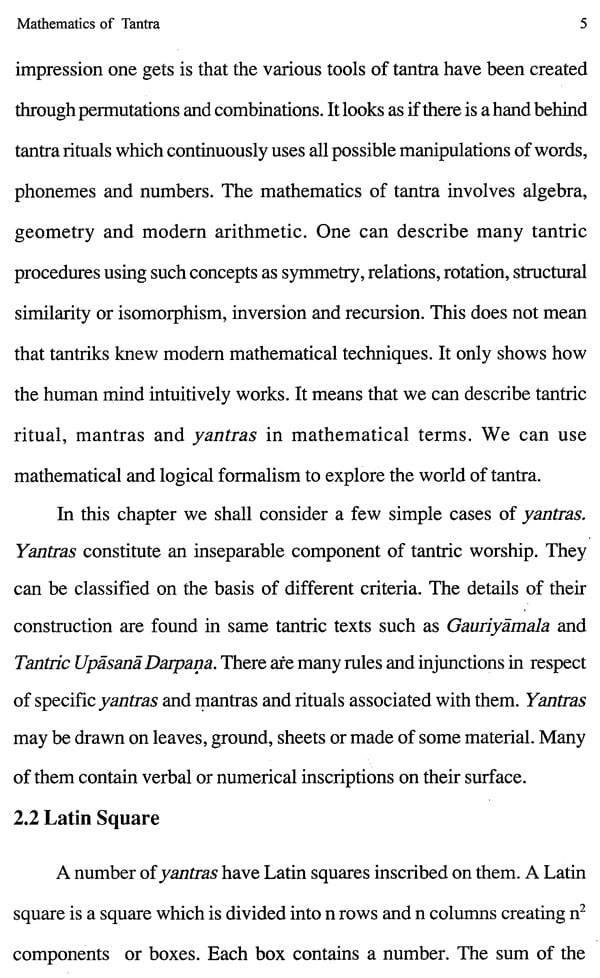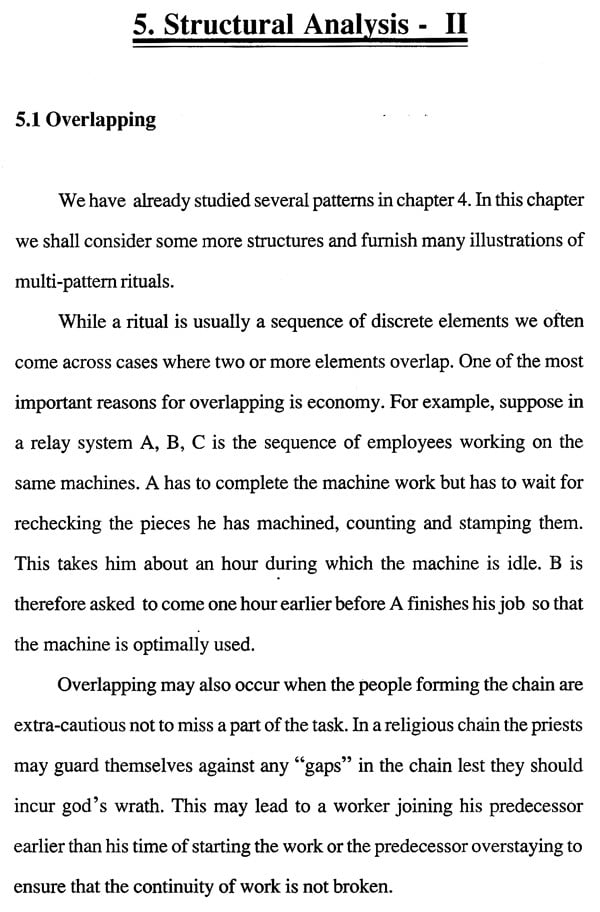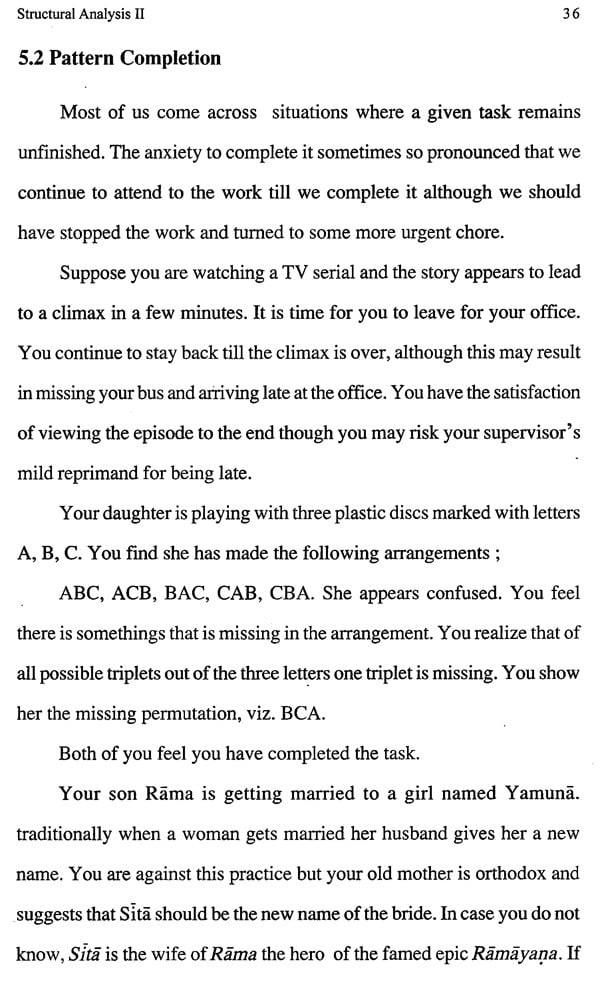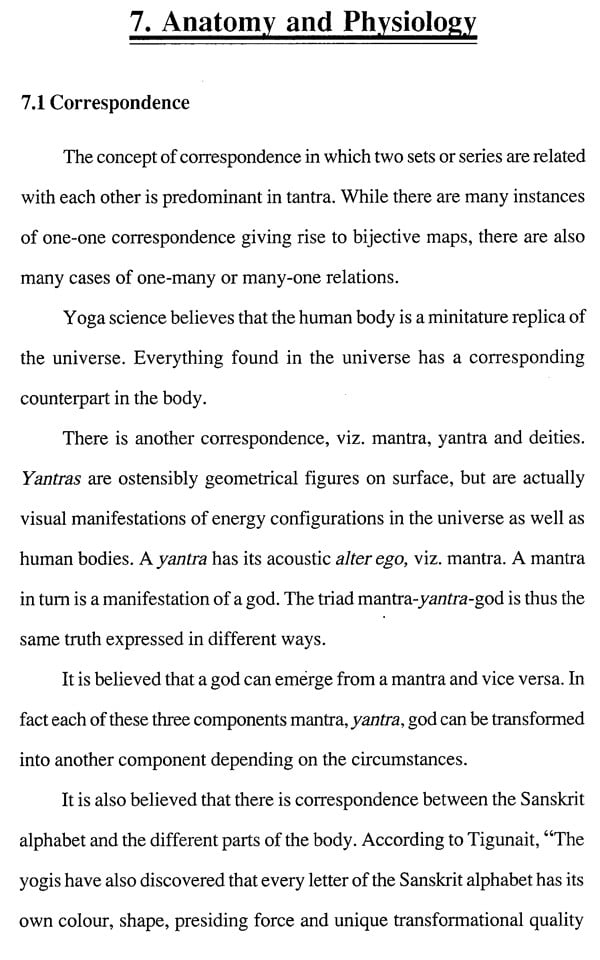
Mathematics of Tantra
Book Specification
| Item Code: | UAA923 |
| Author: | Jayant Burde |
| Publisher: | Motilal Banarsidass Publishing House, Delhi |
| Language: | English |
| Edition: | 2021 |
| ISBN: | 9789391024765 |
| Pages: | 116 |
| Cover: | PAPERBACK |
| Other Details | 9.50 X 6.50 inches |
| Weight | 190 gm |
Book Description
Tantra is a heterodox system of worship. While its followers consider it as a potential source of acquiring spiritual and supernatural powers, in the minds of common people it evokes a mixture of awe and fear similar to the dread produced by black magic and sorcery.
In this book the author analyses tantra using a structural approach from a neutral ground. He comes to the conclusion that tantra reveals a prelogical and premathe-matical mind which help us provide new insights in to human development.
JAYANT BURDE received his M.Sc. degree in mathematics from Bombay University he also holds a degree in law from Bangalore University and is a Certificated Associate of Indian Institute of Bankers. He has written many articles and papers in many fields : mathematics, cash management, organizational structure etc. He has also published eight books in different discipline of knowledge :
Philosophy of Numbers (2007), Rituals, Mantras and Science (MLBD, 2004),Sunya and Nothingness (MLBD, 2009), Buddhist Logic and Quantum Dilemma (MLBD, 2012), The Mystique of Om (New Age Books, 2007), The World of Rhythm called Rituals (New Age Books, 2007) and Jaina Relativism and Relativity Physics (MLBD, 2014), The Riddle of the Infinite (MLBD, 2020)
A close structural analysis of tantric rituals reveals many mathematical patterns which are not discernible to the lay person. The rituals with their tools such as yantras, mantras, mandalas, etc. display many geometrical concepts; mirror and rotational symmetry, translation, magnification and contraction, congruence and similarity. Many concepts from abstract algebra and modern arithmetic are also found. Some of them are : relations, mapping, one-one correspondence, homeomorphism, isomorphism, equivalence, similarity of sets or numerical equivalence, partial order, permutations and combinations and so on.
Tantric ritual acts, yantras and mantras also share many well-known features (General Ritual Structures, GRS) with verse, bird songs, music, dance, religious and social rituals and pathological rituals. Most of these characteristics can be represented by symbolic formulas.
It would be naive to conclude that tantriks knew modern mathematics. Tantras like Vedas originated when Indian society was preliterate and knowledge passed from one generation to the next orally through many mnemonic devices. Those who claim that Vedic society was highly advanced in mathematics, science and technology, was conversant with nuclear science, electronic devices, rocket and satellite technology and advanced weaponry merely display jingoism and ancestor worship.
This book merely claims that tantric rituals can be expressed through mathematical idiom. It does not claim that trantriks based their activities such as construction of yantras or composition of mantras on modem mathematics. Their prelogical and premathematical (if such adjectives can be used) mind used intuition and experience to create new structures which with the help of modem mathematics we can formalize.
Tantra is a heterodox method of acquiring spiritual or supernatural powers (siddhis) and liberation in life (jivanamukti). It rests on the premise that each one of us is a repository of divinity of which we are not aware. This divinity can be realized through certain practices. Tantra literally means "looms" or "weaving." It is assumed that we are born with patterns designed by Mother Nature. Because of our defective lifestyle the original pattern is disturbed leading to disease and unhappiness. Tantra reweaves the fabric of life which not only restores health but with consistent practice can lead you to acquisition of superhuman powers and liberation.
Tantra has many schools but they all have some common features. Its practice (sadhana) incorporates such elements as breathing exercises, meditation, hatha yoga, mantras, geometrical figures (yantras), gestures (mudras) and mandalas (circles). These practices activate the dormant power (sakti) lying within us. The power is then harnessed for different purposes.
There are two broad views regarding a tantric system. First, it is a worship of goddess Sakti who is contrasted with the universal masculine consciousness called Siva. Mantras are treated as deities who are the manifestations of the primordial power. One of the principles of tantra is that only a god can worship a god. There is thus divinization of the worshipper. The other view is a secular belief that tantra is a science. Its practice when strictly followed yields the stated results whether you believe in tantra or not. Tantra regards the human body as a microcosm containing the diverse counterparts of the universal elements. Through tantric practice the student awakens the internal forces and polarizes them with cosmic powers under the guidance of an experienced teacher.
Tantra evokes awe and fear in the mind of the common person because it differs from other methods of worship in many ways. A tantric school is esoteric; it is confined to its few members and its knowledge is not freely available to common people. Second, some of its putative siddhis have such destructive goals as injuring or killing others. Third, some schools use what is called the forbidden path in which the practitioners use five M's, viz. wine (madya), fish (matsya), meat (mamsa), gestures (mudras) and sex (maithuna). Thus tantra is usually associated with black magic. Tantras have been classified using different criteria. In the past certain geographical regions were associated with predominant schools of tantra. Siddhisvara, kali tantra, nila tantra, siddhiyamala, yogini tantra, kubjika tantra, rudrayamala and many others were practiced in what is now India.
Sabar tantra, damar tantra, kundalini tantra, etc. prevailed in Afghanistan and Iran. Mahanirvana, meru tantra, indrajala, etc. were dominant in China and Nepal. Guptadiksa, bhutasuddhi, siddhamantra, lilavati tantra, etc. were prevalent in Java. (now in Indonesia) Tantra practice seems to be waning and today tantric sites in India are situated in the North and the North-East. However there is a solitary shrine in the South in Kerala in Malabar Hills.
An important broad classification of tantra has three schools :
1. Kaula, which can be practiced by householders.
2. Samaya in which meditation is an important element.
3. Misra which is the blend of Kaula and Samaya.
While tantra is unorthodox it has sources in the Vedas, Upanisads and Puranas What's more, tantra is eclectic and has borrowed from outsiders who came in contact with Indians. It is possible that some mantras have Arabic and Persian influence. There are many legends about how tantra originated. It is believed that tantras and agamas originated from Siva. According another tradition, agamas, nigamas and tantras can be traced to dialogues between Siva and his wife Girija. Agamas and tantras were explained by Siva to Girija while the nigamas (Vedas) were explained by Girija to Siva. However, Siva 's consort is regarded as an inseparable aspect of Siva and hence tantra may be treated as the worship of Siva-Sakti. Mantrasastra means "Science of Mantra". According Sankaracarya mantrasastra is entangled with trantra.
Hence in a broad sense the agamas are tantras which connote mantrasastra and nigamas are the Vedas.
**Contents and Sample Pages**












